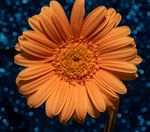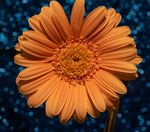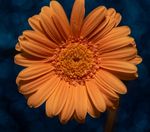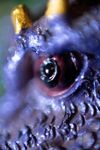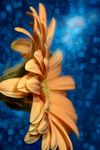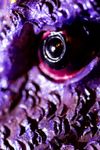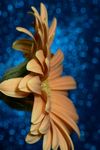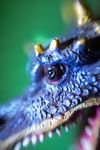MACRO PHOTOGRAPHY 101 - Shooters Photography Club
←
→
Page content transcription
If your browser does not render page correctly, please read the page content below
Required Equipment Dedicated Macro Lens, ranging from 30mm to 200mm (best but most expensive option) Tokina.jpg Normal zoom or Prime Lens with extension tubes (reduced cost while maintaining decent quality) Extension-Tubes.jpg Raynox magnifying lens (good quality but can be more expensive then extension tubes) Raynox.jpg Raynox-2.jpg Macro lens filters (relatively inexpensive but inferior quality images, not recommended) Macrofilters.jpg Reversing ring (very inexpensive, decent quality if used with a fast prime lens, but requires focus stacking) Macro reverse ring.bmp A Crop Sensor Camera will produce a more magnified image, anywhere from 1.5 to 2 x that of a Full Frame Camera The above equipment can be used independently or in combination to increase magnification.
Optional Accessories Tripod is recommended when doing table top Macro to reduce camera shake and out of focus conditions On Camera Flash (Ring Flash) when shooting out in field where light availability is poor Macro ring flash.jpg Small Flash Lights (LED suggested, recommended) A Macro Rail (optional) is great to move the focal plane into focus macro rail.jpg Remote Shutter Release to reduce camera shake shutter release_.jpg Reflectors to direct lighting optional Plastic sheet if planning to get down on your knees Some form of clamping mechanism to hold subject from moving in the wind Spray bottle for water droplets etc. Artificial background material for additional color and or contrast
Technique When shooting indoors (tabletop), suggest tripod with studio lighting, with subject held in place by clamps or other method to prevent movement When shooting outside without a tripod, move the camera in and out rather than using the focus ring to bring the subject into focus. Also suggested to move the subject rather then the camera into focus. Shoot in manual focus because Auto Focus will always search for subject and give false readings. If you move the camera or the subject in and out, you do not need to focus the camera. It is best to ensure that your lens is parallel to the subject to increase the depth of focus. However it may not be the best composition unless you are photographing something flat. When photographing flowers it is best to use some form of a clamp to reduce the flower moving with the wind. Create your own design fixed to your tripod. Shoot in burst mode at 5-6 F.P.S. to ensure that at least one image is in focus
Techniques continued Shoot at a higher shutter speed so that the burst mode is not delayed (ex. a 1 sec shutter speed would only give you one image in burst mode) On bright sunny days it is suggested to bump up the ISO to achieve faster shutter speeds without experiencing grain, however know your camera’s limitations by doing test photos to determine the maximum acceptable ISO If you plan to shoot insects, go out early in the morning as they are less active in the early mornings. For Butterflies, go out later in the day to see where they are setting for the night, then return the next morning as they will not have moved and you will be able to photograph without worrying about the subject moving. This will give you ample time to set up on a tripod for better results When shooting insects (bees), you may need to shoot with a high shutter speed (over 1/500 sec.) to reduce motion blur. In this case you may need to increase ISO and shoot in burst mode. Practice this method ahead of time to be prepared when you need to perform your shot.
Additional Techniques The longer the lens used in shooting insects the better because any movement will scare the subject and will result in a loss of shot. Consider using a plastic sheet or knee pads on early mornings where dew may be present. It is important to be comfortable when doing Macro. You may be required to stack images, this is easy on a table top but not so easy out in the field, hand held. However with a solid camera grip and steady hand it is possible. You will need to auto align images in post processing, in Photoshop or other types of photo editing software. Consider downloading a software such as DigiCam for Helicon remote or other dedicated camera specific macro focus stacking software to help editing your images. Most software are free to download, however the dedicated Camera specific software (like the one I use ControlMyNikon) are not free. Consider a dedicated focus stacking software such as Zerene Stacker
Using Extension Tubes
Know your minimum focus distances (see chart below)
Min. wide angle lens that
can be used with extension
tubes is a 28-30 mm lens
The above chart shows the minimum focus distances for lenses using extension tubes, your lenses may perform different then those shownCamera and Lens Combinations
Full Frame verses Crop Sensor Cameras (all photo’s shown are without focus stacking)
100mm Crop Sensor 100mm Full Frame 100mm Crop & Full Frame w/ext. tubes 50mm w/reverse ring, full frame & crop sensor
50mm w/reverse ring & ext. tubes full & crop sensor 300mm full frame with & without ext. tubes
300mm crop sensor with & without ext. tubesEffect of aperture on D.O.F. The following photos taken at true or flat focal plane at various apertures Taken @ f/3.8 Taken @ f/16 Focus stacked (2) images
Effects of aperture on D.O.F. (cont.)
The following photo’s were not taken on a flat focal plane
D.O.F. is drastically reduced and depending on the background you may have a Bokeh or
messy back ground. Shooting stopped down and focus stacked is a preferred method here.
shot at f/4.8 shot at f/11 shot at f/22 shot at f/32 stacked (4) images
▪
Zerene Stacker
The above example shows the limited D.O.F. when shooting Macro up close and the need to stack multiple
photographs. A photo like the one above would normally require 25 to 30 stacked photographs.Sample Macro Photographs
Pic -1Pictures\red&blue.jpg
Pic-2Pictures\B&W.jpg
Pic-3Pictures\B-Fly-1.jpg Disclaimer
Pic-4Pictures\B-Fly-2.jpg Several of the photo’s attached were taken by other
Pic-5Pictures\B-Fly-3.jpg photographers on the internet and are not my property.
Pic-6Pictures\B-Fly-4.jpg These were placed only to show you what can be
Pic-7Pictures\black wine.jpg achieved with proper techniques, equipment, practice and
Pic-8Pictures\Blue drop.jpg determination. Several of my photo’s also included.
Pic-9Pictures\Blueflower.jpg
Pic-10Pictures\D-Fly.jpg
Pic-11Pictures\eye.jpg
Pic-12Pictures\Orange.jpg
Pic-13Pictures\Purple&yellow.jpg
Pic-14Pictures\Purple.jpg
Pic-15Pictures\red rose.jpg
Pic-16Pictures\red wine.jpg
Last suggestion take lots of photos and
Pic-17Pictures\black wine.jpg
have fun, remember it’s not “what you see,
Pic-18Pictures\Vette.jpg but how YOU see it”.
Pic-19Pictures\Yellow&red.jpgYou can also read

